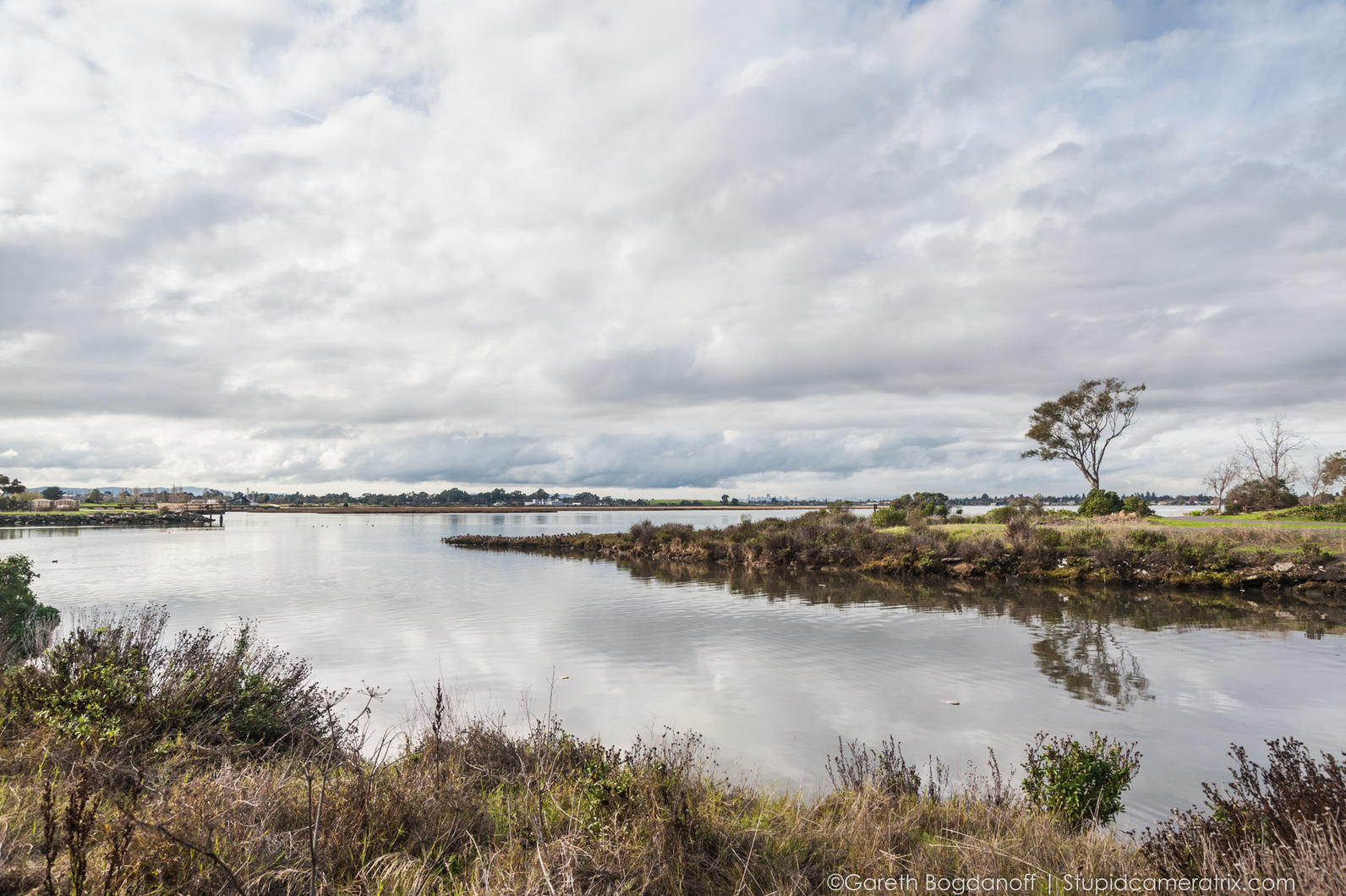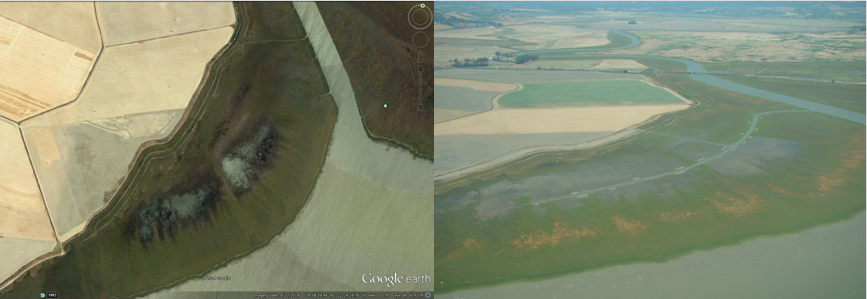Surf Scoter
Latin: Melanitta perspicillata
Protecting the birds and habitat of the West Coast's largest estuary.
Richardson Bay is part of the larger San Francisco Bay. Photo: Alison Sheehey
Audubon California has long been committed to protecting the birds and habitat of the San Francisco Bay and its wetlands.
The San Francisco Bay area is recognized as an international biodiversity hotspot because of the vast number of species of birds, animals, plants found there – many of which are found nowhere else. The bay itself is the largest estuary on the West Coast, and is considered one of North America’s most important. It provides critical habitat for shorebirds, waterfowl, marsh birds, as well as over 500 species of fish, mammals, and plants, many of which are either threatened or endangered.
San Francisco Bay is a critical stopover point along the Pacific Flyway migration route of shorebirds and waterfowl, which number over one million birds at the height of migration, and includes three Important Bird Areas due to the high number of rare and endangered bird species and the sheer number of shorebirds and waterfowl supported by the by and surrounding wetlands. The area has also been recognized by the Western Hemisphere Shorebird Reserve Network, which ranks it as being of “Hemispheric Importance” to shorebirds.
Audubon California operates the largest estuarine reserve in San Francisco Bay, the Richardson Bay Audubon Center & Sanctuary, which protects 900 acres of San Francisco Bay habitat and provides a center for community education, restoration, and celebration of the Bay.
The Richardson Bay Audubon Center & Sanctuary is a remarkable slice of nature on the shores of the San Francisco Bay.
Audubon is advancing nature-based strategies to help coastline communities weather the impacts of climate change.
Audubon California and its partners are bringing back 400-acres of wetland habitat in San Pablo Bay for the benefit of a variety of birds, including the endangered Ridgeway's Rail.
A new white paper looks at this invaluable habitat ecosystem in San Francisco Bay
This large, handsome shorebird is often seen on our coast, calling in loud springtime territorial displays, hunkered together in small winter flocks and prying limpets off rocks. Yet the species is rare across its range and poorly understood in California in particular.

News of proposed budget cuts at the Environmental Protection Agency bode ill for conservation in San Francisco Bay and San Diego, as two major programs are on the chopping block.
In San Francisco Bay, the EPA looks to cut its entire $4.8 million budget for clean water and wetlands restoration programs. This is particularly bad news, as San Francisco Bay has never received a proportionate share of federal restoration funding.
Last year, residents of Bay Area communities approved Measure AA, which will raise about $500 million over the next 20 years for wetlands restoration. Leaders had intended to use this money to leverage greater investment from the federal government.
The EPA is also proposing to cut the $3 million it spent last year on cleaning up pollution in the Tijuana Estuary down to $275,000. This area is the last remaining large wetland in Southern California, and is an Important Bird Area. Endangered Ridgeways Rails and Light-footed Rails make great use of the area.
In addition to cuts specifically targeting California, we also learned of proposed cuts that will go into effect nationwide, but will certainly impact things we Californians care about, such as gutting programs that test coastal water quality, educate our children about nature, address climate change, and reduce pollution in communities suffering the most.
Please raise your voice against these cuts by sending an email to your members of Congress.

Courtney Gutman got an aerial view of the progress made at our Sonoma Creek enhancement project which we completed in November. Gutman is our restoration project manager from the Richardson Bay Center & Sanctuary and oversaw construction on the 400-acre tidal marsh in the greater San Francisco Bay.
Within weeks of finishing the construction, the team could already see a myriad of vegetation and wildlife coming back to the area, including a variety of small shorebirds and pickleweed, a native succulent that absorbs saltwater.
The Sonoma Creek enhancement is the first project of its kind on a pre-existing marsh. Before the project, sea water was able to wash in during high tide, but with no way for it to drain, stagnant pools became perfect breeding ground for mosquitoes and an imperfect breeding ground for plant life and other animals. To solve this problem, we dug canals to help with drainage of the area. Natural channels can now form in areas that were once stagnant, contributing to a healthier marshland. We also moved about 30,000 cubic yards of soil to create a transition ramp that slows storm surges and gives animals somewhere to go when the tide gets too high.
Gutman says people are starting to see estuaries beyond their importance for wildlife, plants, and biodiversity.
“Now on top of that we’re seeing how important they are for combatting climate change. They’re truly our natural barriers for rising sea levels,” she says.
For more information about the project, visit our Sonoma Creek page.

Our friendly Bald Eagle is back at our Richardson Bay Center & Sanctuary, this time using the newly restored Aramburu Island shoreline.
Audubon California Newsletter comes to your inbox monthly with breaking news and important conservation updates from our state.
Help secure the future for birds at risk from climate change, habitat loss and other threats. Your support will power our science, education, advocacy and on-the-ground conservation efforts.
Your advocacy helped save the California Condor. Tell your reps you want a climate bond to ensure the future of critical conservation efforts.